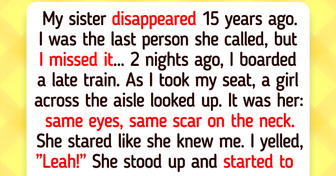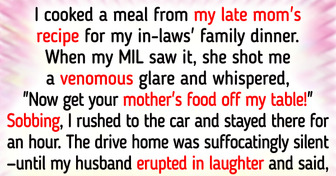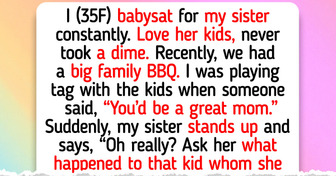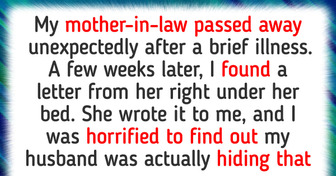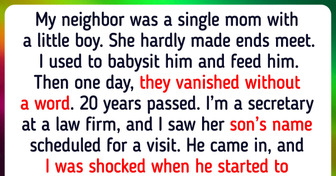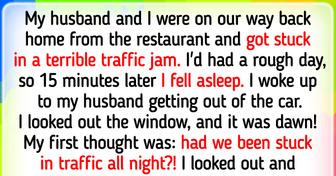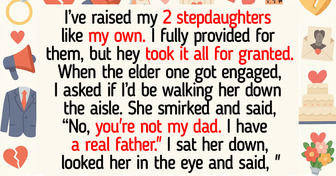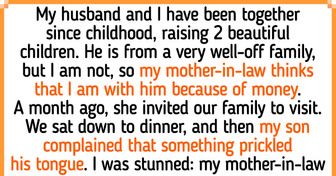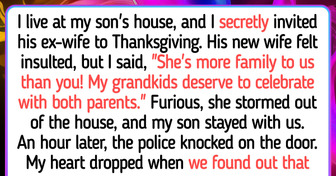18 People Who Dared to Get Plastic Surgery and Hit the Jackpot

They say that the best table manners are those that no one notices. That is, they manifest themselves in a relaxed and natural behavior, not in a deliberate demonstration that you are familiar with all the rules of etiquette. Nevertheless, you should remember the rules of behavior at the table, and people around you will be thankful to you for that.
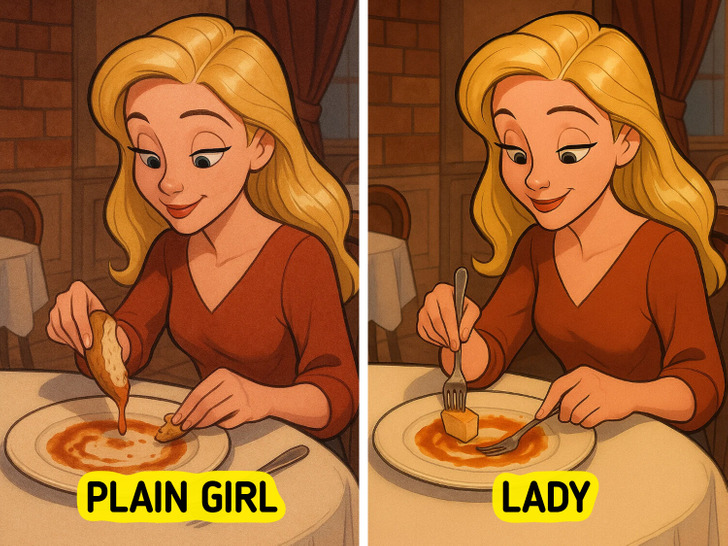
You can use a slice of bread to collect the leftover sauce on the plate. But you must remember that the bread must always be on a fork.
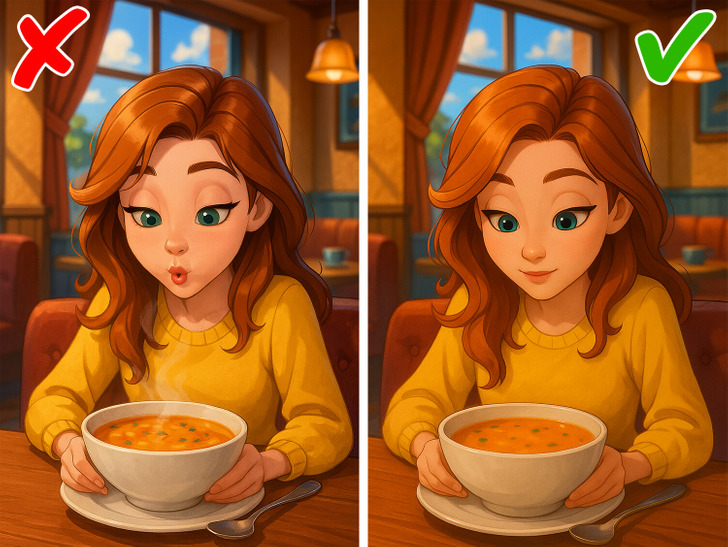
No matter how hot the served food is, don’t blow on it under any circumstances. Wait a few minutes and then proceed with the meal. During informal gatherings, you can ask for an ice cube to cool down a hot drink.

If you are served a burger and French fries at an informal dinner, you should eat the fries with your hands, just like the burger. But if the French fries are served with a steak, they, like the steak, should be eaten with a fork. In other words, French fries should be eaten in the same way as the main dish with which they are served.
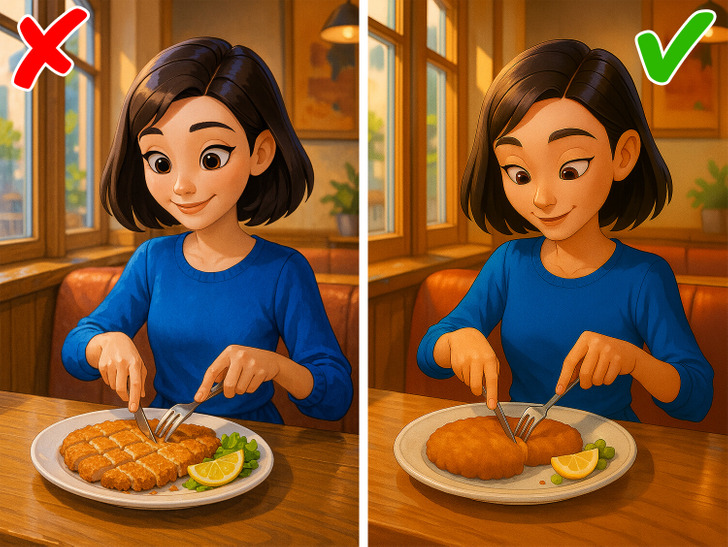
You should cut the food in a way that you can put the whole piece in your mouth at once. Of course, if it is about helping a child, cutting the food at the beginning of the meal is acceptable. By the way, don’t allow any food to remain in the spoon or on the fork after you have put it in your mouth.

Sometimes we can’t tell where our glass is on the table. But once you make the OK gesture with both hands, you will realize that on your left there is a plate with bread (b — bread), and on your right there is a glass with a drink (d — drink). You can also remember the abbreviation BMW, so that you can easily identify the bread on the left, the main course (meal) in the center and the drink (water) on the right.
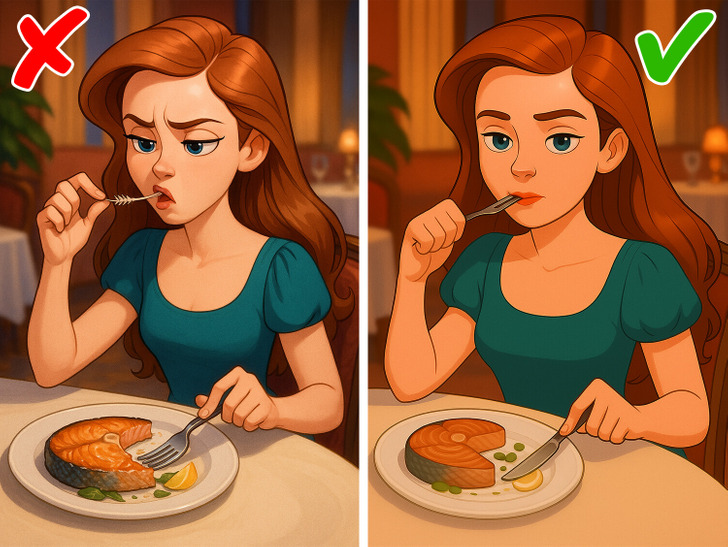
If while chewing food you come across a bone or cartilage, then deal with as much meat or fish in your mouth as possible, and only then proceed to remove the inedible element. The rule is this — if the food was consumed with a cutlery, then the bone should also be removed with its help, and if you ate with your hands, then the bone should be removed with the help of your hand.
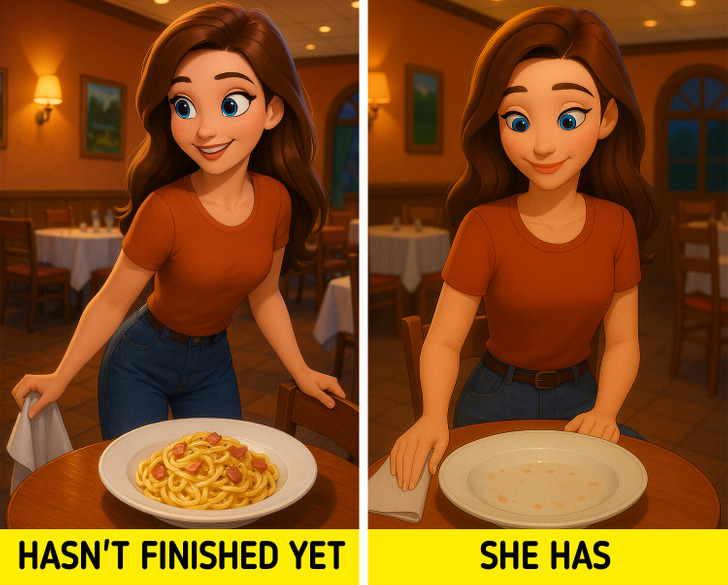
If you come for lunch, the cloth napkin should be unfolded completely and placed on your lap. And if you are going to have dinner, it should be placed on your lap, previously folded in half. If you leave the table with the intention of continuing the meal, put the napkin on a chair. It should be placed on the table only if you have already finished eating.
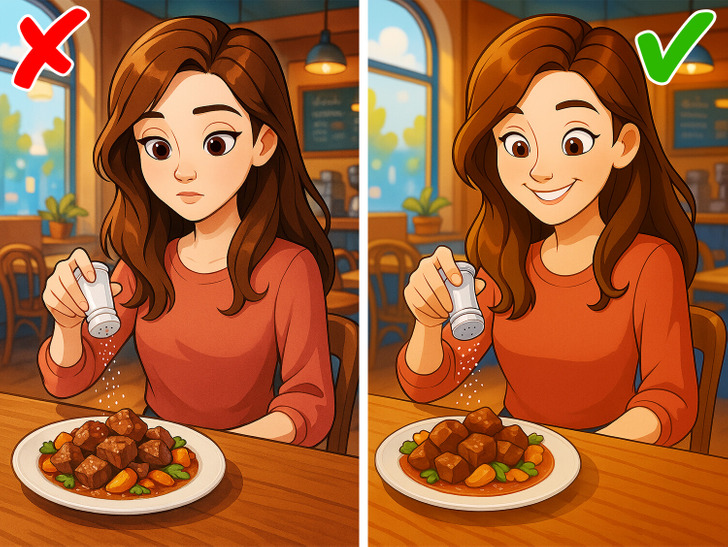
Additional seasonings, as well as salt and Parmesan, should only be added after you have tasted the food. In an informal setting, feel free to add whatever you would like, but in a formal setting it may seem offensive to even salt the dish.
If you’re in an expensive restaurant, and you don’t see pepper and salt on the table, there may be a reason for that. Most likely, the chef has spent a great deal of time creating the dish and is confident that its flavor is completely balanced and doesn’t need additional spices. You should not sprinkle salt over the entire dish, but rather on the edge of the plate.
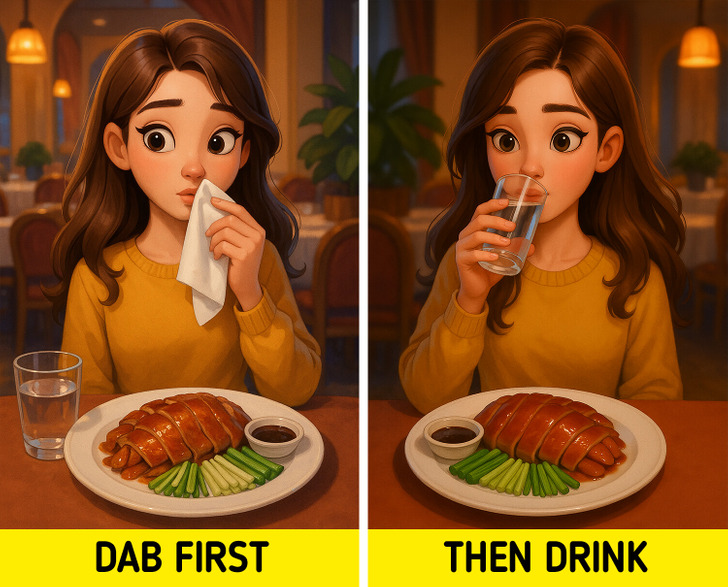
It is recommended to often use a napkin during a meal. And you should not wipe your lips with it, but dab them or pat them lightly with a napkin. This should be done before drinking, so that the edges of the glass remain clean.
By the way, even if you are very thirsty, according to the rules of etiquette, it is important to drink in small sips. Drink only after you have chewed your food completely.
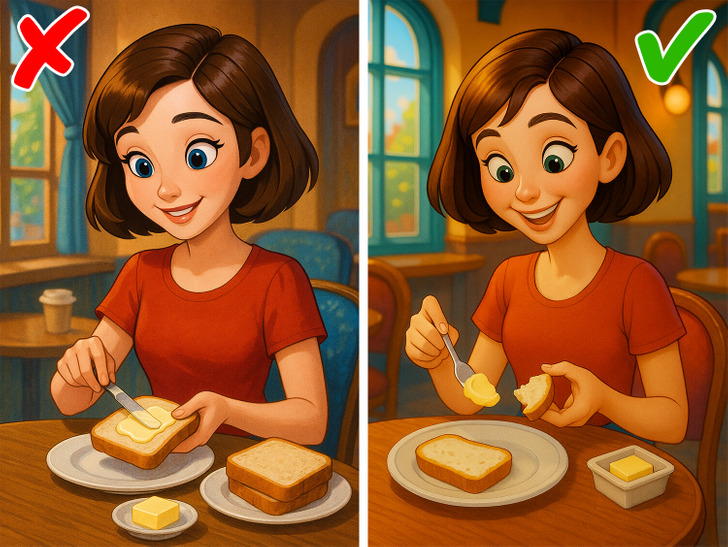
If you want to spread butter on bread, buns, croissants or any other bakery product, first put the required amount of butter on your plate. Then break off a small piece from the bread, butter it and send it into your mouth completely. By buttering the whole piece of bread, you are making a grave mistake, allowing a greasy sheen to appear on your fingers and in the corners of your mouth.
According to modern etiquette, an exception should be made for spreading butter on toast. In this case, you can spread it all over the bread at once.
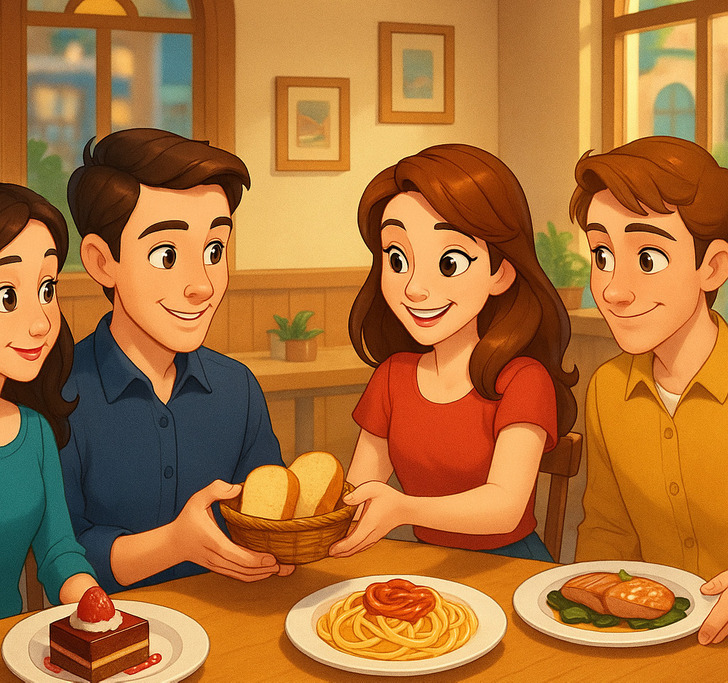
An exception to this may be if the person who asked you to pass the dish is sitting one or 2 seats to your left. You should hold the dish while the person puts the food on their plate. But if it is heavy and uncomfortable, it should be placed on the table.
There is also the etiquette of passing bread. If it is uncut, cut a few slices from it and first offer it to the person on your left, then pass the basket to the right. When cutting the bread, you should never touch it with your fingers. Hold the loaf with a cloth napkin, which is in the bread basket.
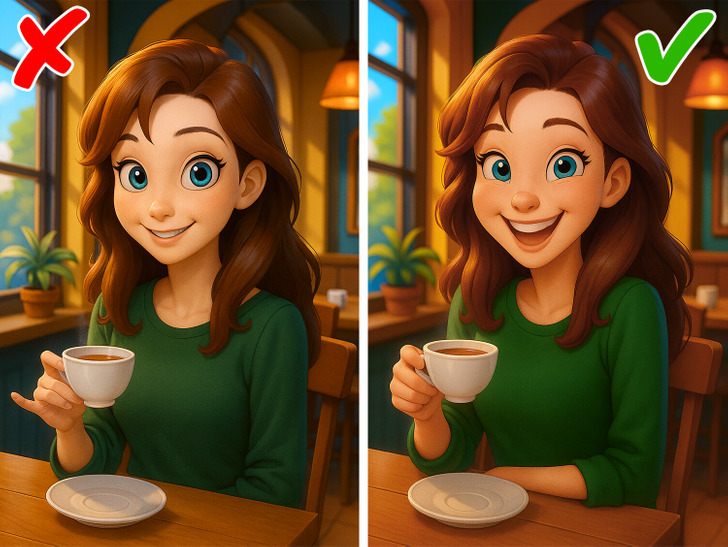
People used to do this during the Middle Ages, because they mostly ate with their hands and wanted to keep the little finger clean for dipping it in spices. So this tradition is a thing of the past. If you need to balance the cup while drinking, you can extend your little finger to support the cup from below and nothing more.
And here are etiquette rules that we’re constantly breaking.


